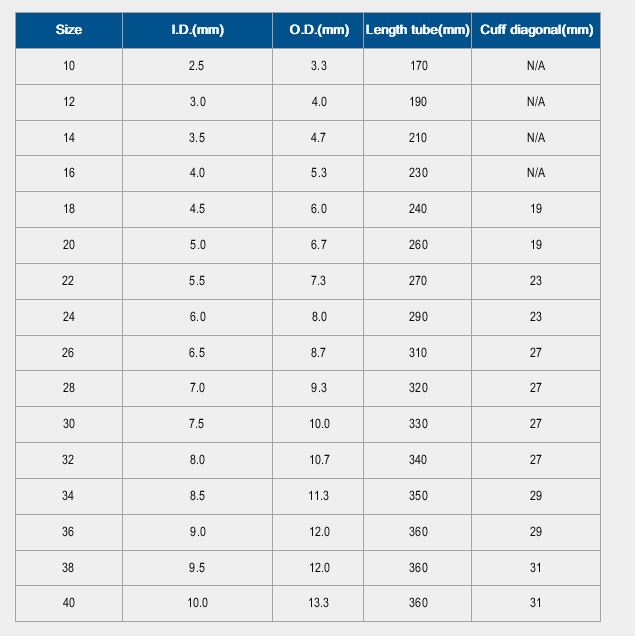An endotracheal tube is a breathing tube. It is used temporarily for breathing because it keeps your airway open. This curved tube is placed through the patient’s nose or mouth into his trachea (windpipe). Tape or a soft strap holds the tube in place.
Many different types of tracheal tubes are available, suited for different specific applications:
An endotracheal tube is a specific type of tracheal tube that is nearly always inserted through the mouth (orotracheal) or nose (nasotracheal).Types of endotracheal tube include oral or nasal, cuffed or uncuffed, preformed reinforced tubes, and double-lumen endobronchial tubes. For human use, tubes range in size from 2 to 10.5 mm in internal diameter (ID). The size is chosen based on the patient’s body size, with the smaller sizes being used for pediatric and neonatal patients. Tubes larger than 6 mm ID usually have an inflatable cuff.
Oral endotracheal intubation is an advanced airway procedure involving the insertion of an endotracheal tube under laryngoscopy into the trachea. Endotracheal tube (ETT) sizing is measured according to internal diameter (millimeters). Additionally, as a reference during intubation each ETT has a scale, in centimeters, for determining the distance along the ETT from the tip.
The size of endotracheal:

Catalogue